Keyed Filling Systems
Easy Fill
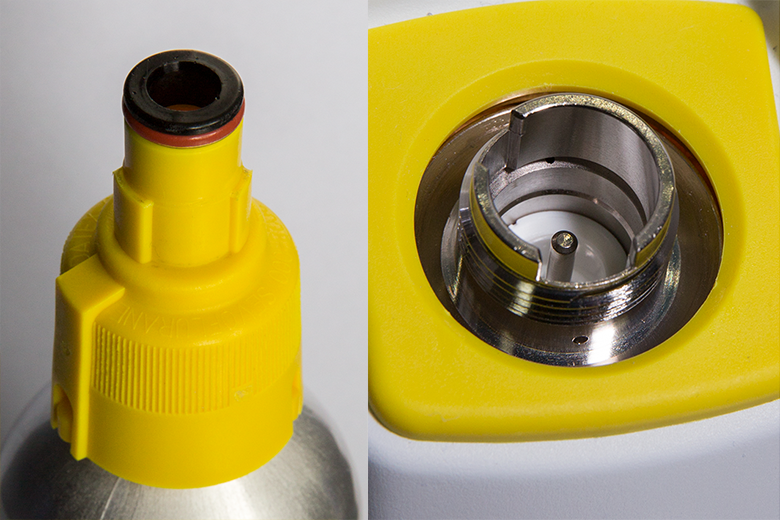
Tec 7 vaporisers use Easy Fill. There are Easy Fill connectors for both Sevoflurane and Isoflurane.
A central pin is depressed opening the valve to the vaporiser, and it also opens the valve on the filling port. Easy-Fil has a collar with two notches in it, which match with two notches on the sevoflurane filler.

There are two holes in the block. One is for the liquid to run in, and one for air to come out.
These fillers could be fiddly to use, and sometimes required repeated readjustments to before filling could be completed.
Keyed Filling Blocks
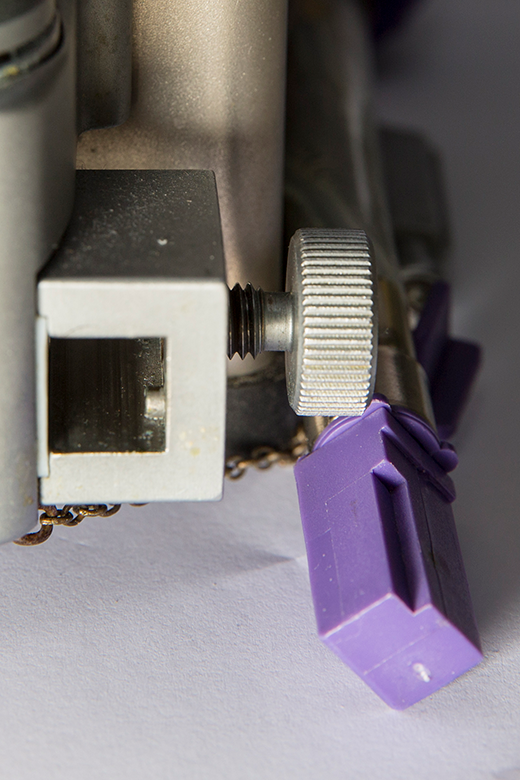
Keyed filling blocks were available for Halothane, Methoxyflurane, Enflurane, Isoflurane and Sevoflurane.
They consisted of a square opening, with a pin inset at a specific position. The correct filler had a groove to match teh pin.
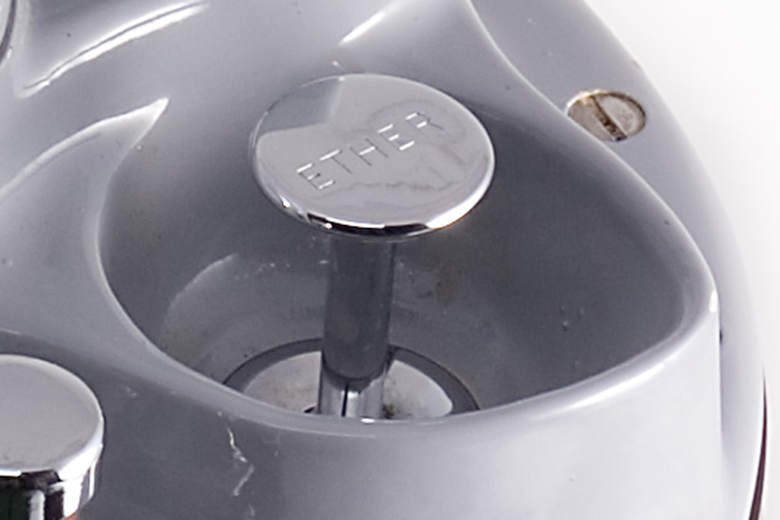
Agents were originally poured into the vaporiser directly from the bottle. This meant that it was relatively easy to put the wrong agent into a vaporiser.
If an agent with a high saturated vapour pressure is put into a vaporiser designed for an agent with a lower vapour pressure, the output will be higher than indicated.
There are three issues:
1. Ensuring that the right filler is plugged into the vaporiser.
2. Ensuring that the filler is attached to the correct bottle.
3. Ensuring that the right agent is in the bottle.
Quick Fill
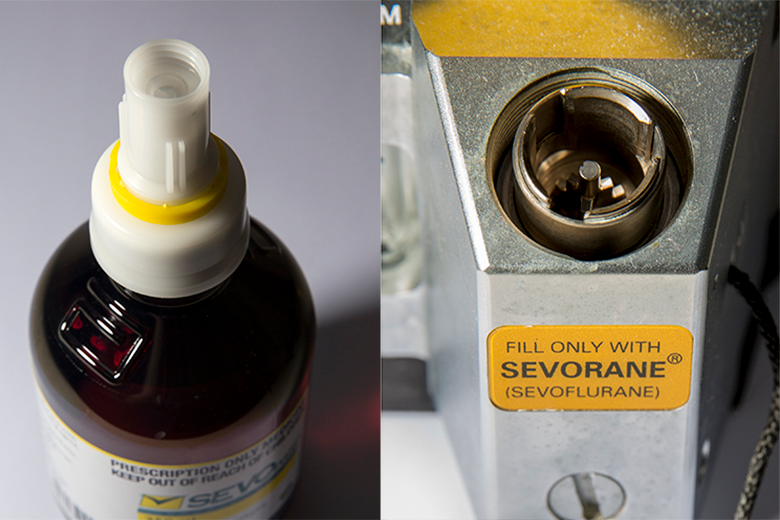
Quick Fill is a similar looking filling port to Easy Fill. It has three notches in the collar spaced at 360°.
Neither filler nor bottle is compatible with Easy Fill. Both types of filler are currently being sold by GE. You need to be careful to specify the correct filler for your vaporiser.
Correct Filler
Desflurane
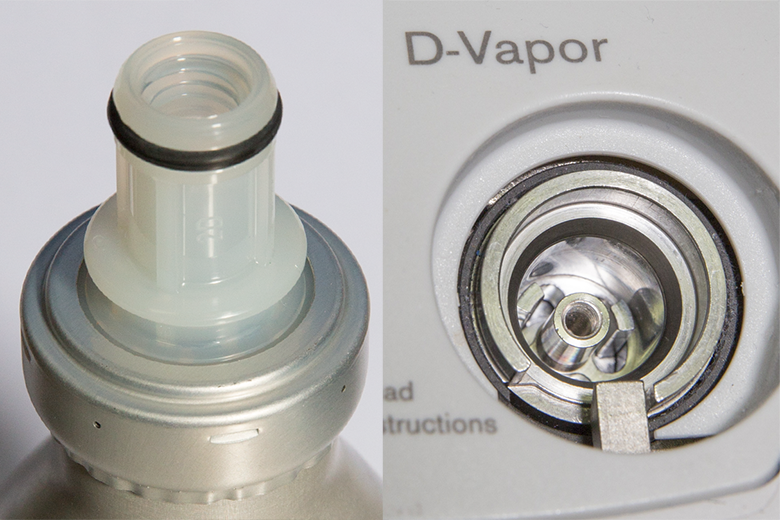
The Desflurane filler is similar in concept to the Quick Fill and Easy Fill fillers. There is a valve in the filler, which is opened by pressure on a central pin, and this pressure also opens the vaporiser chamber.
In the Tec-6 there are two valves in the vaporiser. The second valve is only opened when the bottle is tilted upwards.
This filling system is called Saf-T-Fill in Russel.
Non Interconnectability of Sealed Filling Systems
The collar around the Easy Fill port means that the nozzle of the desflurane filler is too short to depress the pin. The nozzle of the Easy Fill and Quick Fill systems are too wide to fit into the desflurane filling port.
Correct Bottle
Screw Top Bottles
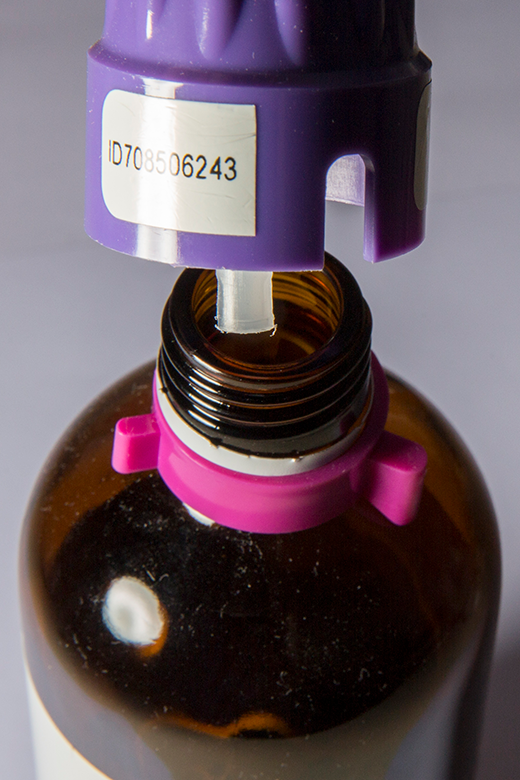
The screw thread of the halothane bottle was a different size to the other agents, and so only a halothane bottle could be screwed on.
Isoflurane and Easy Fill sevoflurane have the same size thread. The bottles are made specific by the presence of a colour coded collar which has two projections which fit into notches on the filler. One notch is larger than the other.
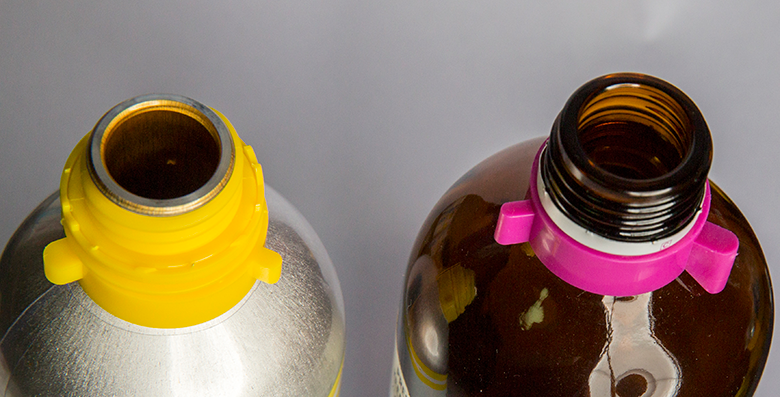
The collars for isoflurane and sevoflurane are mirror images of each other. If a collar were removed and replaced upside down an error could occur.
Other potential ways in which the system could be defeated are if the collar were removed, the notches in the filler filed.
There is also nothing to stop someone inserting the filler, and then pouring directly into the top.
Quick Fill Sevoflurane and Desflurane
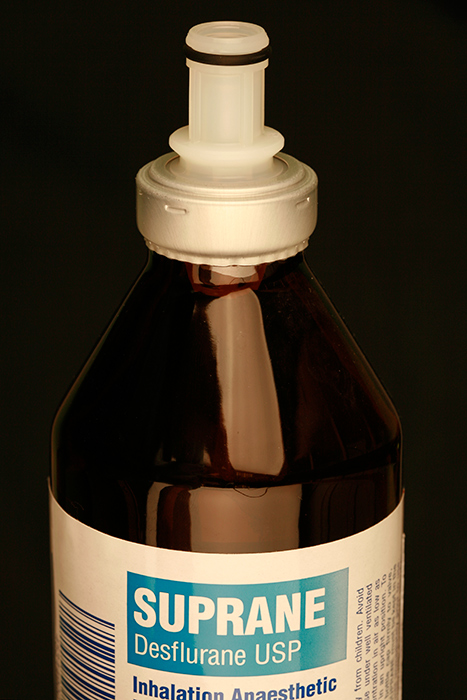
The desflurane filler is crimped to the top of the bottle, which prevents it from being detached. The Quick Fill fillers are now also permanently attached to the bottle.
Correct Agent in the Bottle
There have been cases in which people have used volatile agent bottles to store other substances, such as chlorhexidine.
The desflurane and new Quick Fill sevoflurane fillers act as a deterrent to this, because they cannot be removed from their bottles.
Plug in Connectors
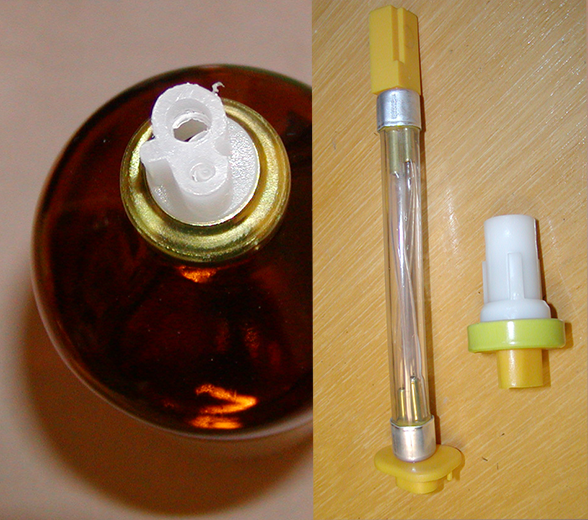
For a time there were some sevoflurane bottles manufactured with an irregularly shaped plug in connector. I suspect they are no longer made.
The fact that there are three different types of sevoflurane fillers, and three different kinds of bottle is an unfortunate failure in the standards setting process. It illustrates the importance of anaesthetists being actively involved in the standards bodies.